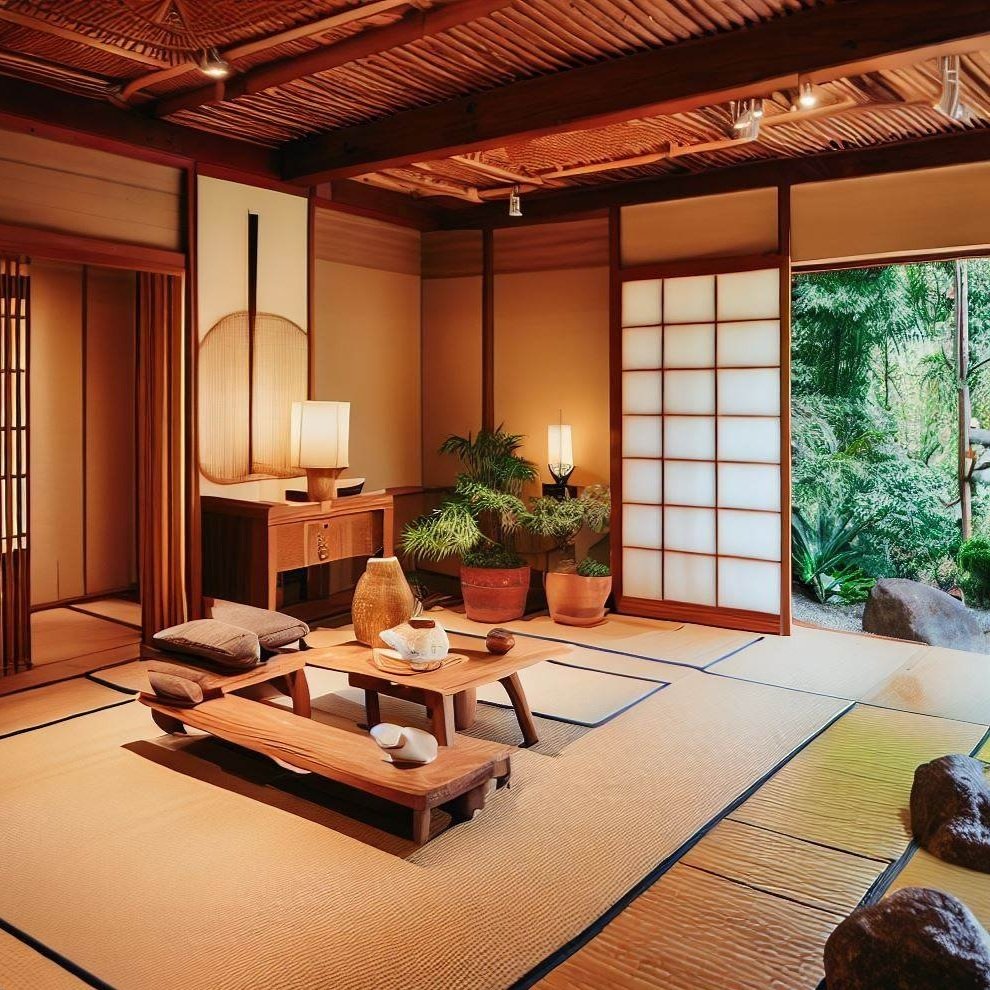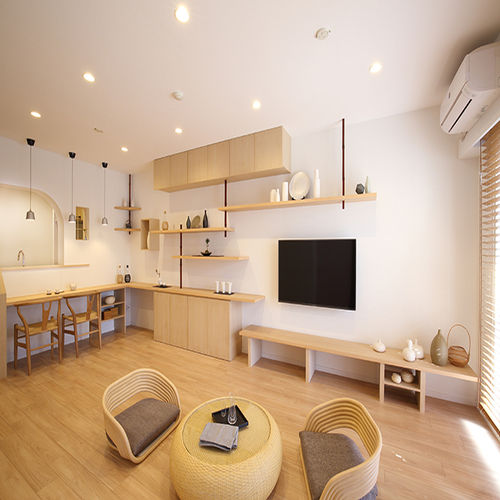Japanese living room decor encapsulates a unique blend of aesthetics, functionality, and tranquility. From minimalist designs to natural elements, the Japanese approach to interior design inspires many seeking harmony in their living spaces. In this article, we’ll explore the key principles, elements, and considerations for creating a Japanese-inspired living room that enhances the ambiance of your home.
Understanding Japanese Aesthetics
Japan’s rich culture and history shape its interior design philosophy, focusing on simplicity, nature, and balance. Japanese aesthetics are often captured through the following elements:
Key Principles of Japanese Design
- Minimalism: Less is more. Japanese decor emphasizes open spaces, uncluttered surfaces, and essential furnishings.
- Nature: Integrating natural elements, like wood, stone, and plants, fosters a connection to the outdoors.
- Harmony: Balancing different elements in the room promotes overall serenity.
- Functionality: Every piece of furniture serves a purpose, ensuring that the space is practical and inviting.
Essential Elements of Japanese Living Room Decor

When designing a Japanese-inspired living room, consider incorporating the following elements:
1. Color Palette
Japanese decor typically adheres to a muted color palette. Shades of beige, gray, white, and soft earth tones create a calming environment.

Color Comparison Table
| Color | Emotion | Usage |
|---|---|---|
| Beige | Warmth | Walls, upholstery |
| Gray | Calmness | Accent pieces |
| White | Purity | Lighting, decor |
| Earth Tones | Grounded | Flooring, furniture |
2. Furniture Selection
Japanese furniture often features low profiles and natural materials. Look for:
- Low Tables: Typically made of wood, these tables foster a communal atmosphere.
- Futon or Tatami Mats: For seating and lounging, these traditional elements provide comfort and versatility.
- Minimalist Shelving: Keep spaces organized with simple, open shelves that display select items.

Pros and Cons of Japanese Furniture
| Pros | Cons |
|---|---|
| Encourages simplicity | May lack storage options |
| Harmonizes with nature | Requires more maintenance |
3. Natural Elements
Bringing the outdoors in is essential in Japanese decor. Consider adding:
- Indoor Plants: Bamboo, bonsai trees, or peace lilies can enhance the ambiance.
- Water Features: A small fountain can create soothing sounds and improve air quality.
- Natural Textures: Incorporate wood, stone, and rice paper elements to maintain a connection to nature.

4. Lighting
Lighting plays a pivotal role in creating a peaceful environment. Opt for:
- Soft Ambient Lights: Use paper lanterns or diffused light sources to create a warm atmosphere.
- Natural Light: Maximize window space to let in as much natural light as possible.
Creating Your Japanese Living Room

With the essential elements understood, let’s delve into the step-by-step process of creating your Japanese-inspired living room.
Step 1: Assess Your Space
Measure your room and determine the layout. Consider how much natural light you receive and the view outside. This can play a significant role in selecting colors and decor.

Step 2: Choose Your Color Palette
Stick to muted, earthy tones. Consider painting walls in soft beige or light gray, and ensure your furniture complements these shades.
Step 3: Select Functional Furniture
Choose low-profile furniture that reflects Japanese design principles. A low coffee table paired with a simple couch or futon will create a cozy gathering spot.
Step 4: Incorporate Natural Elements
Add plants, wooden decor items, and natural fabrics. A few well-placed indoor plants can infuse life into your living space.
Step 5: Focus on Lighting
Install dimmable lighting options and aim for soft, warm light sources. Consider paper lanterns or even candles to enhance the atmosphere.
Step 6: Adjust for Balance and Harmony
Take a step back and observe the overall balance of your room. Ensure that furnishings and decor items are proportionate and well-placed.
Common Mistakes to Avoid
When creating a Japanese living room, be mindful of these common pitfalls:
- Overcrowding: Avoid filling your space with unnecessary items; stick to essentials.
- Ignoring Natural Light: Embrace natural lighting; don’t block windows with heavy curtains.
- Mixing Styles: Stay true to the Japanese aesthetic without blending too many styles.
FAQs about Japanese Living Room Decor
What are the key features of Japanese interior design?
Japanese interior design focuses on minimalism, natural materials, and simplicity, promoting a tranquil environment.
How can I incorporate Japanese decor into a small living room?
Use space-saving furniture, opt for light color palettes, and integrate indoor plants to make the area feel larger and more inviting.
Are there specific plants recommended for a Japanese-style living room?
Popular choices include bamboo, bonsai trees, and various types of ferns, which contribute to the serene ambiance.
What types of lighting are best for a Japanese living room?
Soft, ambient lighting from paper lanterns or diffused sources is ideal for creating a calming atmosphere.
Can I mix Japanese decor with other styles?
While it’s best to maintain the Japanese aesthetic, subtle influences from other styles can be integrated as long as they are harmonious.
Conclusion: Embracing the Japanese Aesthetic in Your Home
Creating a Japanese-inspired living room is not just about aesthetics; it’s about fostering a sense of peace and connection to nature in your home. By understanding and implementing the key principles of Japanese decor, you can transform your living space into a serene haven. Remember, every step taken towards simplicity and harmony in design brings you closer to the tranquil atmosphere that defines Japanese living.
Embrace the tranquility of Japanese living room decor and make your space a personal sanctuary that reflects your style and the principles of balance and nature.